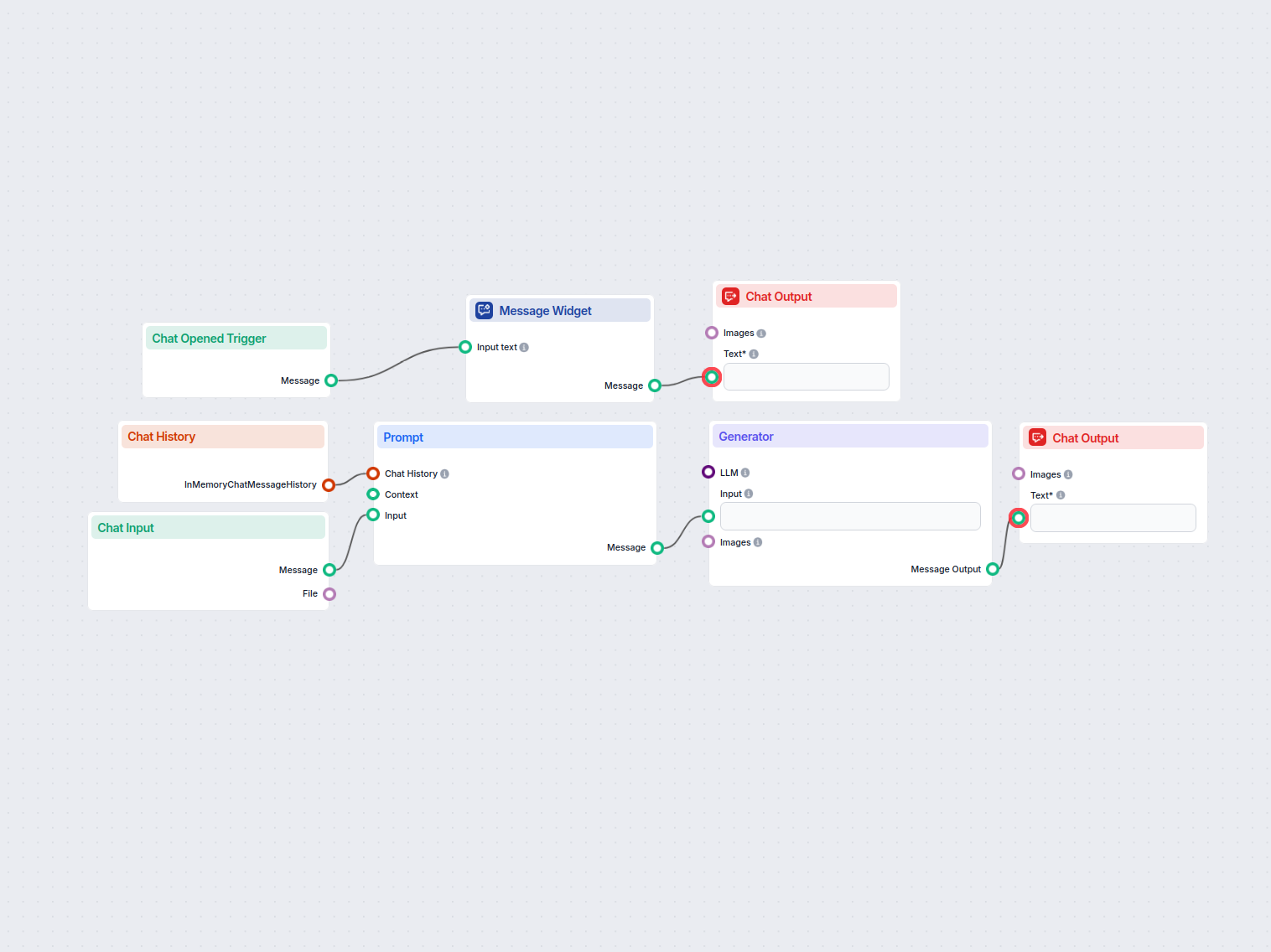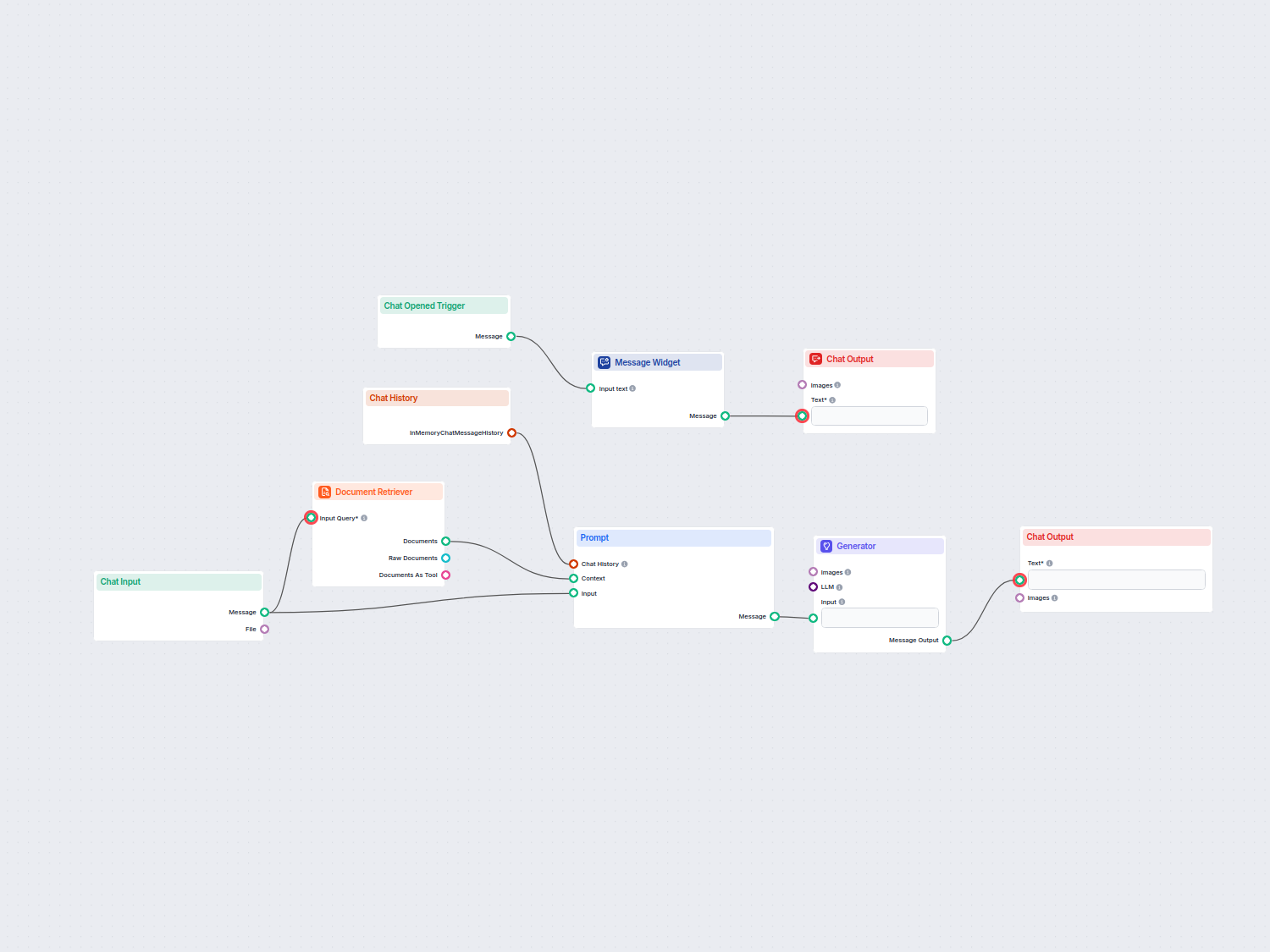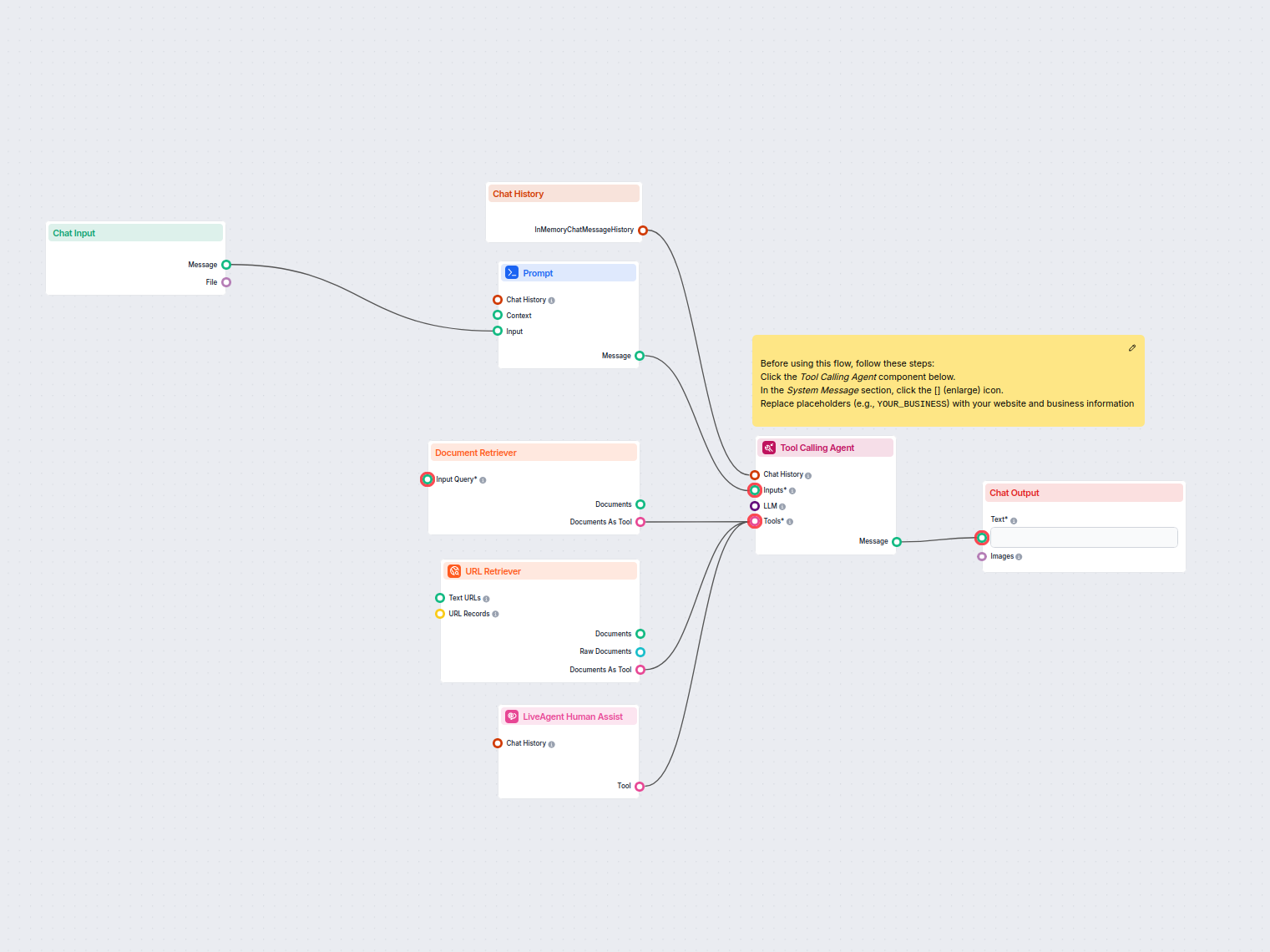AI Agent
AI Agent that can connect to tools and generate responses. It uses custom prompts for role, goal, and backstory.
This workflow leverages an AI Agent integrated with the MCP Client Tool to process user chat input, utilize chat history for better context, and output intelligent responses. Ideal for businesses looking to automate or enhance customer or internal queries by connecting an AI agent with external tools and contextual memory.


Flows
AI Agent that can connect to tools and generate responses. It uses custom prompts for role, goal, and backstory.
MCP Client to be connected to an AI Agent, providing several tools. User can provide a custom MCP configuration as prompt.
Below is a complete list of all components used in this flow to achieve its functionality. Components are the building blocks of every AI Flow. They allow you to create complex interactions and automate tasks by connecting various functionalities. Each component serves a specific purpose, such as handling user input, processing data, or integrating with external services.
The Chat Input component in FlowHunt initiates user interactions by capturing messages from the Playground. It serves as the starting point for flows, enabling the workflow to process both text and file-based inputs.
The Chat History component in FlowHunt enables chatbots to remember previous messages, ensuring coherent conversations and improved customer experience while optimizing memory and token usage.
The AI Agent component in FlowHunt empowers your workflows with autonomous decision-making and tool-using capabilities. It leverages large language models and connects to various tools to solve tasks, follow goals, and provide intelligent responses. Ideal for building advanced automations and interactive AI solutions.
Integrate multiple tools with your AI Agent effortlessly using the MCP Client component. Designed for seamless connectivity, it enables advanced workflows by serving as a bridge between your AI and various external tools, enhancing automation and capability.
Discover the Chat Output component in FlowHunt—finalize chatbot responses with flexible, multi-part outputs. Essential for seamless flow completion and creating advanced, interactive AI chatbots.
Flow description
This workflow is designed to automate and scale the process of handling user chat inputs, leveraging an AI agent that is capable of using external tools and considering chat history to generate sophisticated responses. The architecture supports extensibility, clear interaction points, and can be easily adapted to various business or support automation scenarios.
| Node | Role in the Workflow |
|---|---|
| Note | Provides documentation or important remarks about the flow. |
| Chat Input | Collects user input via a chat interface. |
| Chat History | Retrieves recent chat history to provide conversational context to the AI agent. |
| MCP Client Tool | Connects to an external MCP client, offering the AI agent access to additional functions or APIs as tools. |
| AI Agent | The core intelligence that processes input, utilizes tools, references chat history, and generates a response. |
| Chat Output | Displays the AI agent’s response back to the user. |
Initialization and Documentation
User Input Collection
Contextual Awareness through Chat History
Tool Integration via MCP Client
Intelligent Processing with AI Agent
Output Delivery
ChatInput["Chat Input"] -->|User Message| AIAgent
ChatHistory["Chat History"] -->|Recent Messages| AIAgent
MCPClient["MCP Client Tool"] -->|Tools/APIs| AIAgent
AIAgent["AI Agent"] -->|Response| ChatOutput["Chat Output"]
Note["Note (Documentation)"]
By structuring the workflow in this way, organizations can significantly reduce manual workload, ensure consistency in responses, and adapt quickly to new automation needs.
We help companies like yours to develop smart chatbots, MCP Servers, AI tools or other types of AI automation to replace human in repetitive tasks in your organization.

A simple AI chat assistant workflow that leverages previous conversation history to generate relevant responses to user input. Includes a welcome message and us...

AI chatbot assistant powered by OpenAI GPT-4o that automatically searches and leverages internal company documents to answer user questions. Delivers context-aw...

Automate customer support in LiveAgent with an AI chatbot that answers questions using your internal knowledge base, retrieves relevant documents, and seamlessl...
Cookie Consent
We use cookies to enhance your browsing experience and analyze our traffic. See our privacy policy.